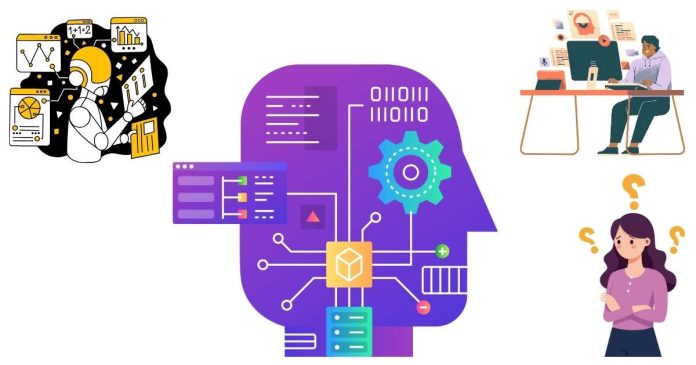A classification algorithm in machine learning is a type of algorithm used to predict the category or class of an item based on its features. Classification is one of the most common tasks in supervised learning, where the goal is to train a model using labeled data (data with known categories) and then use it to classify new, unseen data into predefined classes.
How Does Classification Work?
Classification algorithms work by analyzing the patterns in the training data and learning the relationship between input features and the corresponding output labels. Once the model is trained, it can classify new data points by assigning them to one of the learned categories.
For example:
- Input: Features of an email (e.g., subject, content, sender).
- Output: Category (e.g., “Spam” or “Not Spam”).
Common Types of Classification Algorithms
- Logistic Regression
- Predicts the probability that a data point belongs to a specific class.
- Often used for binary classification problems (e.g., “Yes” or “No”).
- Decision Trees
- Uses a tree-like structure to split data into subsets based on feature values.
- Easy to interpret and visualize.
- Random Forest
- An ensemble method that uses multiple decision trees to improve accuracy.
- Reduces overfitting compared to a single decision tree.
- Support Vector Machines (SVM)
- Finds the best boundary (hyperplane) that separates classes in the data.
- Works well with high-dimensional data.
- Naive Bayes
- Based on Bayes’ theorem and assumes features are independent.
- Often used for text classification (e.g., spam detection).
- K-Nearest Neighbors (KNN)
- Classifies a data point based on the majority class of its nearest neighbors.
- Simple and effective for smaller datasets.
- Neural Networks
- Mimics the structure of the human brain to find complex patterns.
- Commonly used in tasks like image and speech recognition.
Types of Classification Problems
Classification problems can be broadly categorized into:
- Binary Classification:
- Only two possible outcomes (e.g., “Male” or “Female”).
- Multi-Class Classification:
- More than two possible outcomes (e.g., “Cat,” “Dog,” or “Bird”).
- Multi-Label Classification:
- Each instance can belong to multiple categories simultaneously (e.g., tagging a photo as “Beach,” “Sunset,” and “Vacation”).
Applications of Classification Algorithms
Classification algorithms are widely used in various real-world scenarios, including:
- Email Filtering: Classifying emails as spam or not spam.
- Medical Diagnosis: Predicting if a patient has a disease based on symptoms and test results.
- Image Recognition: Identifying objects, animals, or people in images.
- Customer Segmentation: Grouping customers based on their purchasing behavior.
- Sentiment Analysis: Determining whether a review or comment is positive, negative, or neutral.
How to Choose the Right Classification Algorithm
Selecting the best algorithm depends on factors such as:
- Size of the Dataset: Algorithms like KNN may struggle with very large datasets.
- Complexity of the Problem: Neural networks may be required for highly complex tasks, but simpler models like logistic regression can work well for straightforward problems.
- Speed and Resources: Some algorithms, like Random Forest, may require more computational resources compared to Naive Bayes.
- Accuracy vs. Interpretability: Models like decision trees are easy to interpret, while neural networks offer high accuracy but are harder to understand.
Conclusion
A classification algorithm is a powerful tool in machine learning used to sort data into predefined categories. With numerous algorithms available, each suited to different kinds of tasks, selecting the right one depends on the specific problem, the nature of the data, and the desired outcome. Whether you’re working on spam detection, medical predictions, or image recognition, classification algorithms are at the core of many machine learning solutions.
Related posts:
- What does ringing in the ears mean spiritually?
- What Colors Do Blue and Green Make?
- How Long Does Raw Chicken Really Last in the Fridge?
- What are some amazing and memorable Valentine’s Day ideas that will leave a lasting impression?
- What is the definition of ‘friends with benefits?
- What is the difference between a bachelor’s and a degree?


